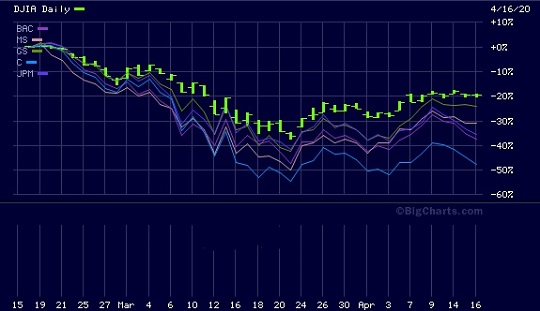Investing in the stock market can be a lucrative venture, but finding ways to maximize your returns while managing risks effectively is key. One strategy that has gained popularity among investors is covered call trading.
In this article, we will explore the concept of covered calls and how you can leverage cheap stocks to generate consistent income. Whether you’re a seasoned investor or just starting out, this article will provide valuable insights into the world of covered call trading.
What is a covered call?
A covered call is an options strategy where investors sell call options on stocks they already own to generate additional income. By selling the call option, investors collect a premium upfront, providing immediate income. The investor also agrees to sell the stock at a predetermined price if the option is exercised before expiration.
The main benefit of covered calls is generating extra income from existing stock holdings. The premiums received can offset potential losses or enhance overall returns. However, there are risks to consider. If the stock price rises above the strike price, shares may be called away before expiration, limiting potential gains.
Additionally, significant declines in stock value can result in losses despite receiving premiums.
In summary, covered calls provide income generation opportunities but come with associated risks. It’s essential for investors to consider both benefits and drawbacks when implementing this strategy.
The Strategy of Covered Calls
Covered calls are a popular strategy among investors to generate additional income. By selling call options on stocks they own, investors receive a premium while giving someone else the right to buy their stock at a predetermined price (strike price) within a specific timeframe (expiration date).
This strategy allows investors to capitalize on market conditions and potentially enhance their portfolio returns. Understanding key terms like strike price, premium, and expiration date is crucial for successful implementation.
Incorporating covered calls into an investment approach can provide regular income and potential capital appreciation while maintaining control over the stocks.
Finding the Best Stocks for Covered Calls
Selecting the right stocks for covered calls is crucial for maximizing returns and managing risk. Important factors to consider include dividend yield, volatility, and overall market trends. High dividend yields provide additional income, while lower volatility reduces the risk of shares being called away prematurely.
By assessing these factors, investors can identify top stocks that offer attractive premiums relative to their current prices. For example, Oracle (NYSE: ORCL) with its stable business model and Pfizer Inc (NYSE: PFE) as a leading pharmaceutical company are both ideal candidates for selling covered calls.
Careful evaluation of these factors will help investors make informed decisions when implementing covered call strategies.
Implementing a Successful Covered Call Strategy
To implement a successful covered call strategy, there are key steps to follow. First, choose a strike price above the current stock price that aligns with your investment goals. Calculate potential returns based on the premium received and assess the risk exposure if the stock is called away or its value declines.
Once you have determined these factors, execute the covered call trade by selling the call option through your brokerage account. Stay informed about market conditions and make informed decisions throughout the process.
| Step | Action |
|---|---|
| 1 | Choose strike price above current stock price |
| 2 | Align expiration date with investment goals |
| 3 | Calculate potential returns and assess risk exposure |
| 4 | Execute covered call trade through brokerage account |
Implementing a successful covered call strategy requires ongoing monitoring and adjustments as market conditions change. Stay proactive and adaptable to optimize your returns and minimize risks in this investment approach.
Tips for Managing Your Covered Call Portfolio
To effectively manage your covered call portfolio, consider these key strategies:
1. Setting profit targets and stop-loss levels: Establish clear profit targets and predetermined stop-loss levels to protect against significant losses.
2. Adjusting positions based on market conditions: Regularly reassess your positions in response to changing market conditions, including stock price movements and volatility.
3. Managing dividends and corporate events: Keep track of dividend payments and corporate events such as earnings announcements or mergers that can impact stock value. Adjust your covered call strategy accordingly to optimize returns and mitigate risks associated with these events.
By implementing these tips, you can enhance the performance of your covered call portfolio while minimizing potential risks. Stay proactive and adaptable to navigate the complexities of the market successfully.
Common Mistakes to Avoid in Covered Call Trading
When engaging in covered call trading, it’s important to steer clear of common mistakes that can hinder your success. One such error is chasing high premiums without proper analysis. Instead of solely focusing on premiums, consider factors like stock fundamentals, liquidity, and market sentiment.
Thorough analysis reduces the risk of poor investment decisions.
Neglecting risk management and diversification is another pitfall to avoid. Diversifying your portfolio prevents overexposure to a single stock or sector, reducing the impact of adverse events on your investments.
Additionally, don’t underestimate the influence of market volatility on options pricing. Being aware of how volatility affects returns and risks associated with covered calls enables you to make informed decisions.
By avoiding these mistakes, you increase your chances of success and optimize outcomes from your covered call trades.
| Common Mistake | Description |
|---|---|
| Chasing high premiums without proper analysis | Focusing only on premiums without considering other factors like stock fundamentals, liquidity, or market sentiment. Conduct thorough analysis before selecting stocks for covered calls to reduce poor investment decisions. |
| Neglecting risk management and diversification | Avoid overexposing yourself to a single stock or sector by diversifying your portfolio. This mitigates the impact of adverse events on your investments. |
| Underestimating the impact of market volatility on options pricing | Be mindful of how changes in market volatility affect potential returns and risks associated with covered calls. |
Success Stories with Covered Call Stocks
Covered call strategies have proven lucrative for investors, generating consistent income and impressive returns. Let’s explore two success stories that exemplify the potential of this approach.
Investor X carefully selected Oracle for their covered call strategy, leveraging its stability and consistent returns. Through a systematic stock selection process, they generated substantial income by selling call options while holding onto their shares.
Recognizing Pfizer’s undervalued status and growth potential, Investor Y implemented a covered call strategy. This allowed them to benefit from both selling call options and the stock’s upward movement, resulting in impressive overall returns.
These success stories demonstrate the effectiveness of covered call strategies when applied to well-chosen stocks. By strategically selling call options on stable or undervalued stocks with growth potential, investors can generate consistent income and achieve remarkable returns.
Unleashing the Potential of Covered Call Stocks
Covered call trading offers investors a powerful strategy to generate additional income while effectively managing risk. By identifying undervalued stocks with attractive premiums, understanding key terms and components, and implementing a well-defined strategy, you can unlock the potential of covered call stocks.
To maximize success, focus on selecting undervalued companies with strong fundamentals and growth prospects. Thorough research and analysis are crucial in identifying these hidden gems that offer both capital appreciation and consistent option premiums.
Implementing a clear covered call strategy involves setting objectives, selecting stocks and strike prices, monitoring market conditions, and diversifying portfolios. This helps spread out risk exposure while optimizing returns.
Engaging in covered call strategies requires continuous learning and adapting to market conditions. Staying informed about current events, economic indicators, and industry trends is essential. Seeking guidance from financial professionals can provide valuable expertise aligned with your investment goals.
[lyte id=’7R6YP5q2TRQ’]







